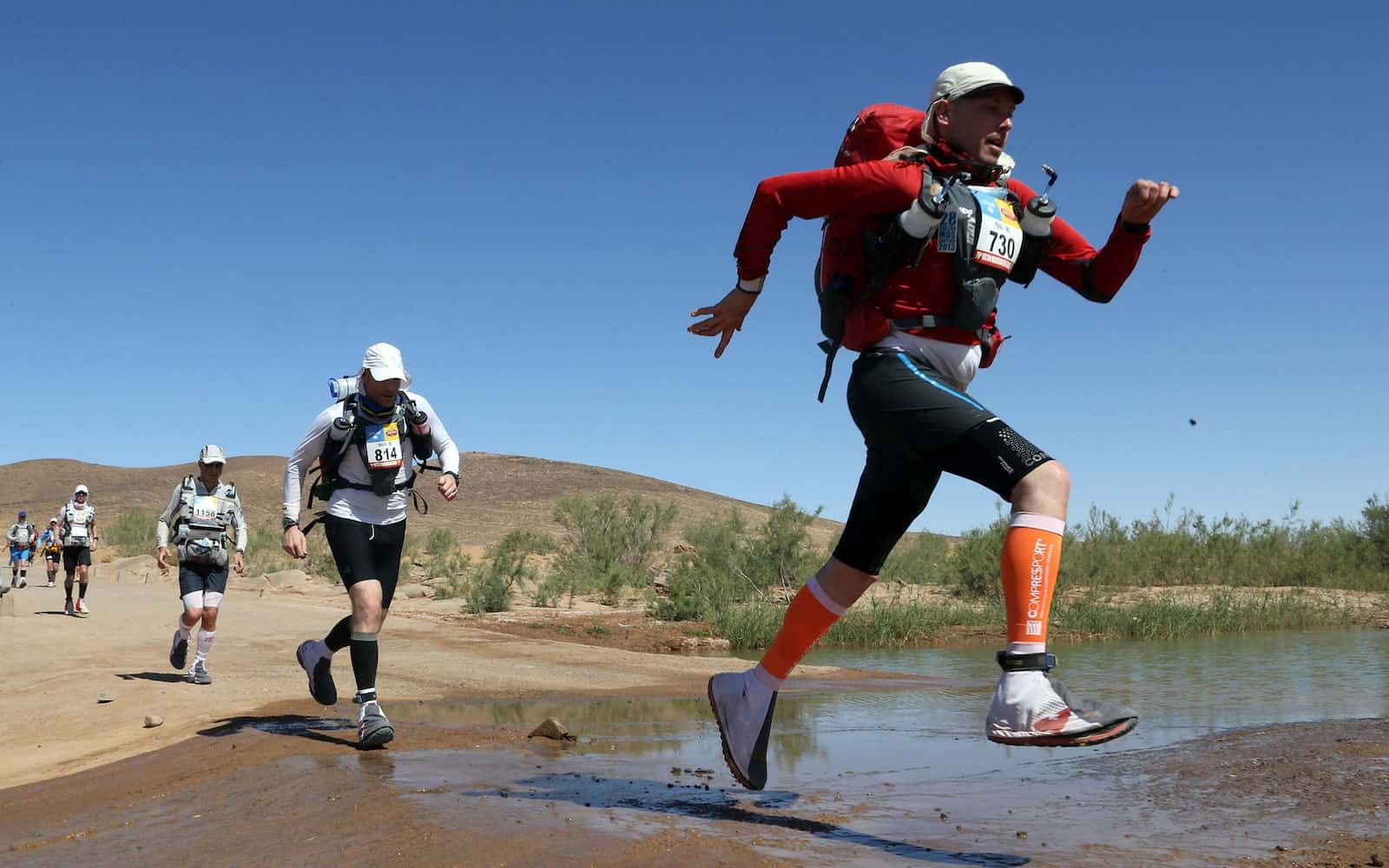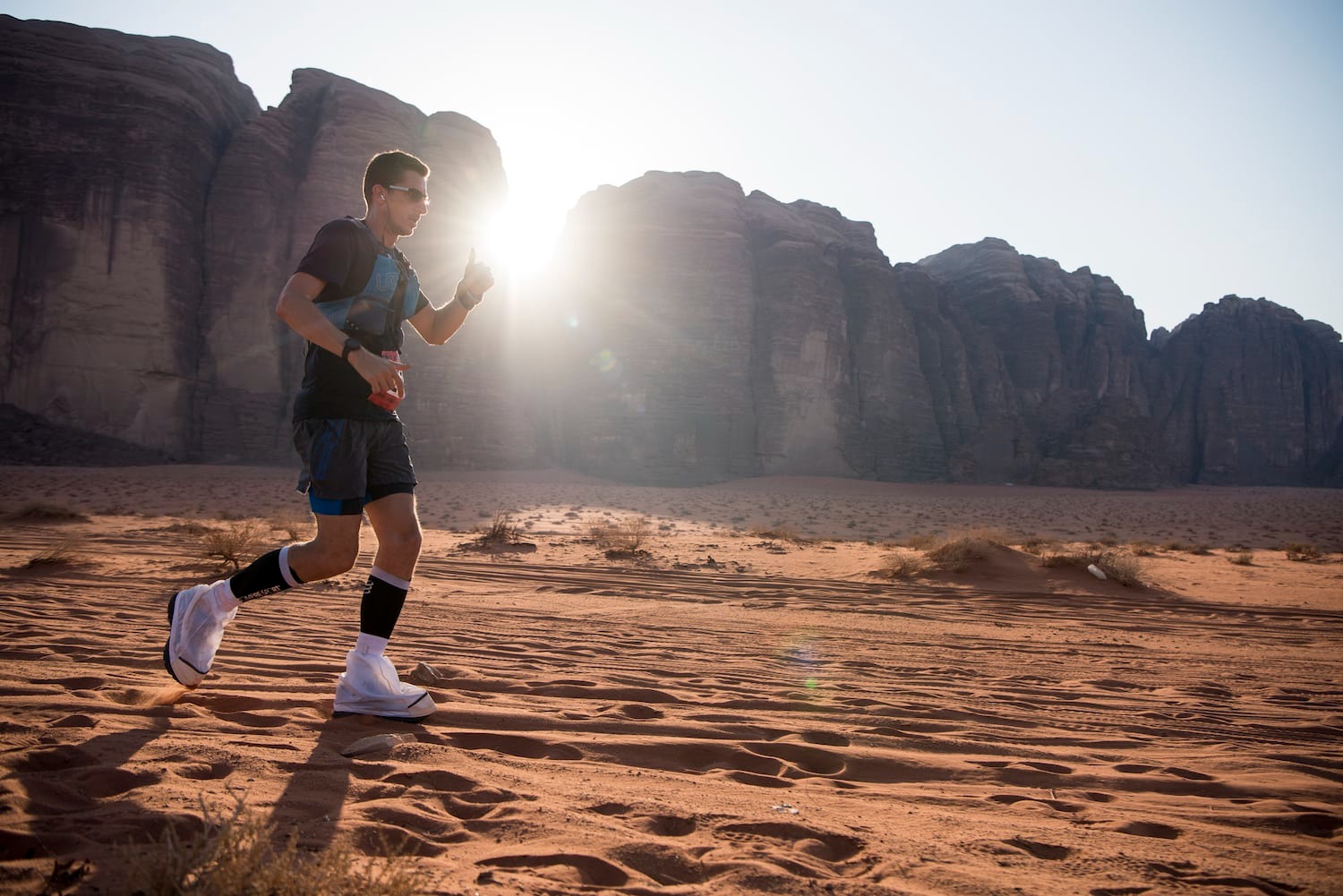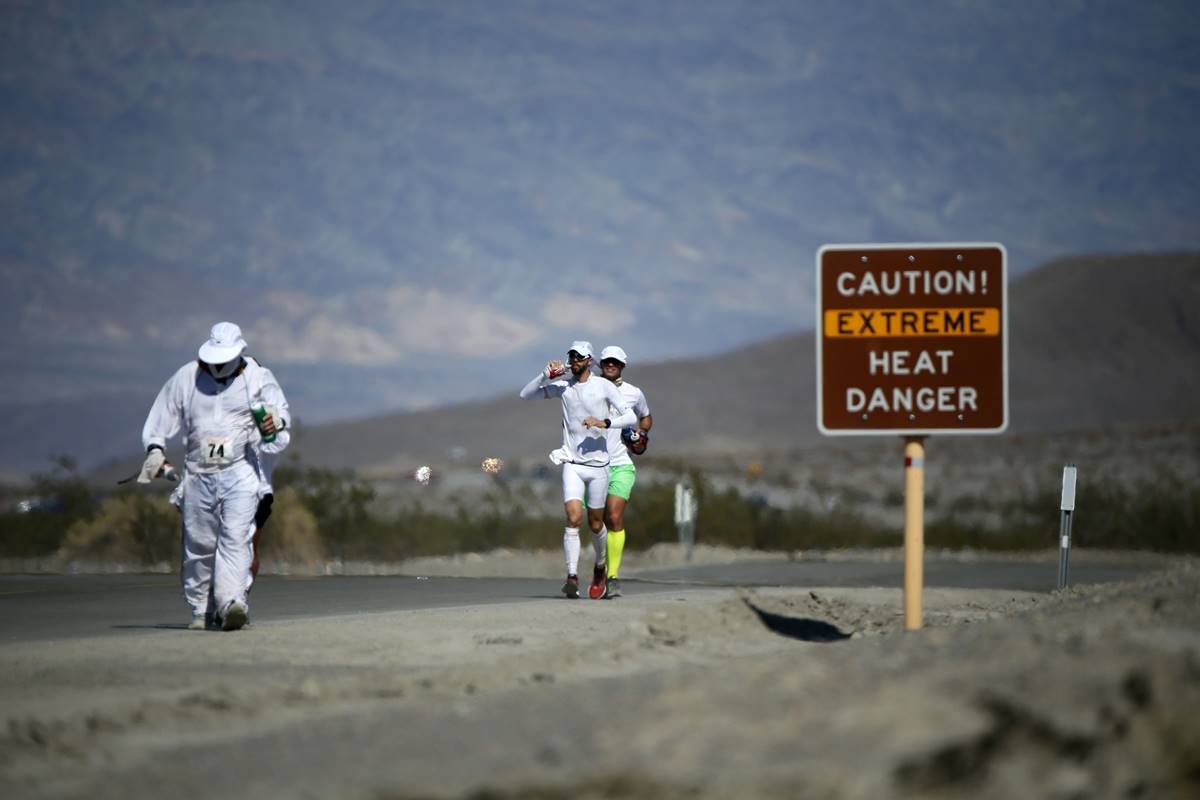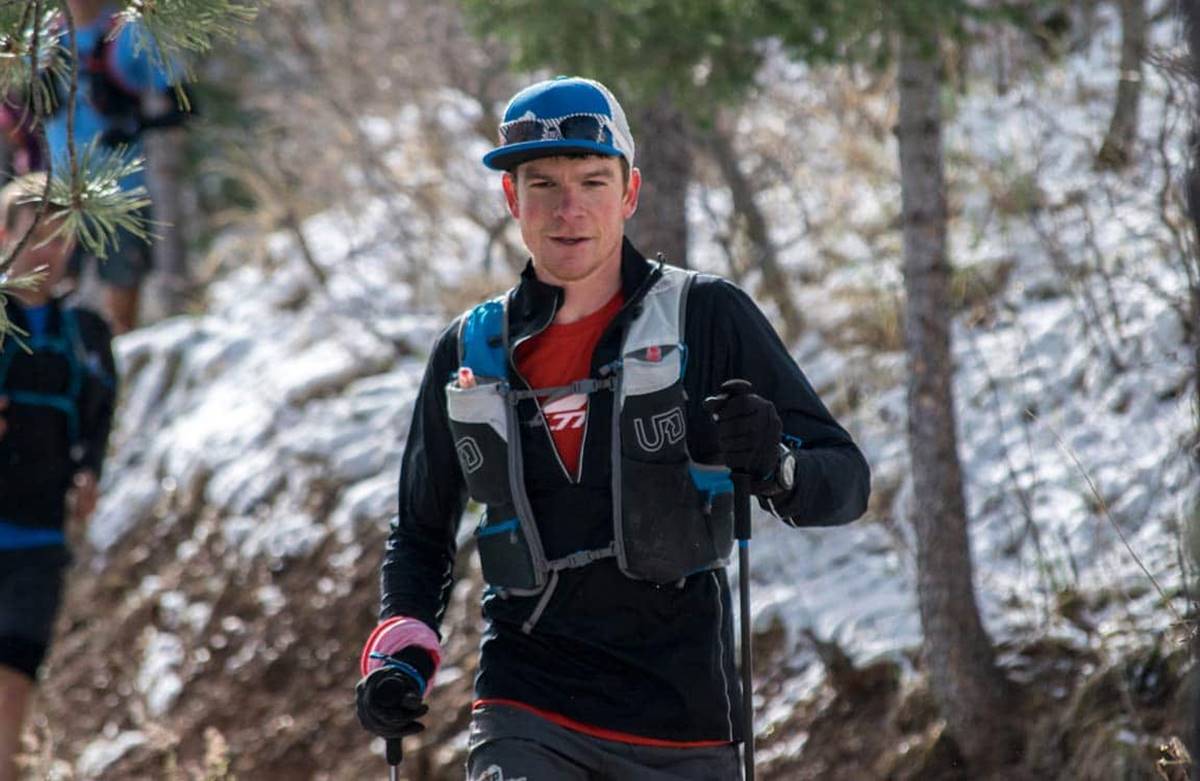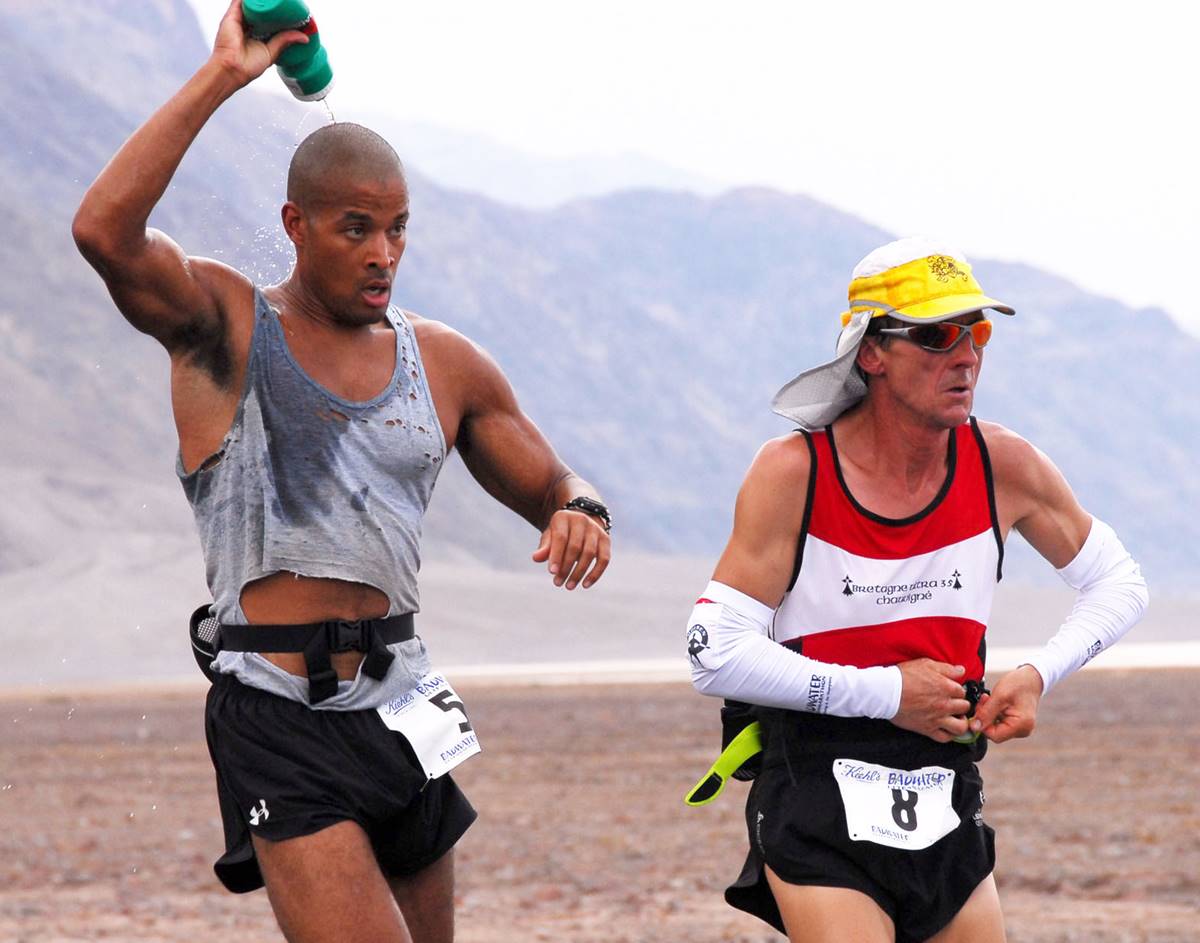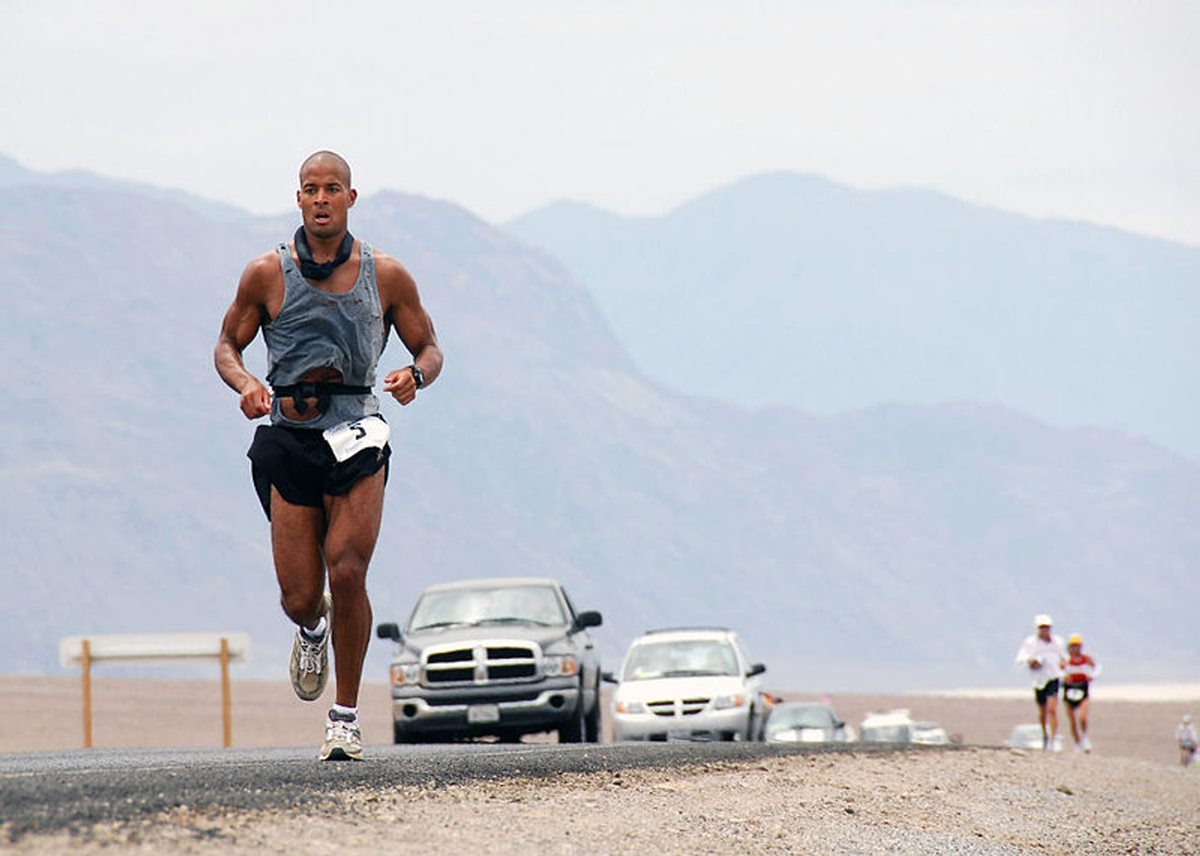

Featured
How Many Miles Is An Ultramarathon
Modified: January 22, 2024
Discover the featured Ultramarathon and find out how many miles it covers. Prepare to be amazed by the staggering distance of this endurance event!
Introduction
Welcome to the world of ultramarathons, where athletes push their physical and mental limits to cover extraordinary distances. Ultramarathons have gained immense popularity in recent years, captivating the attention of both seasoned runners and adventure enthusiasts looking for new challenges. But what exactly is an ultramarathon? In this article, we will explore the fascinating world of ultramarathons, including their definition, historical background, training requirements, challenges, and notable events.
At its core, an ultramarathon is a footrace that exceeds the standard marathon distance of 26.2 miles (42.195 kilometers). While marathons test an athlete’s endurance and speed, ultramarathons take it to another level, often covering distances ranging from 50 kilometers (31 miles) to 100 miles (160 kilometers) or more. These grueling races can be held on various terrains, including trails, mountains, deserts, and even icy tundra.
The origins of ultramarathons can be traced back to ancient civilizations, where long-distance running played a crucial role in military communication and survival. In modern times, ultramarathons have evolved into organized events that attract athletes from all over the world. These races not only showcase physical prowess but also test an athlete’s mental fortitude, determination, and ability to endure pain and fatigue.
Preparing for an ultramarathon requires a combination of physical training, mental discipline, and strategic planning. Runners must develop a training program that gradually increases their mileage and incorporates specialized workouts to build strength and endurance. Additionally, they must pay close attention to their nutrition and hydration, as proper fueling is vital for maintaining energy levels during these long-distance races.
Participating in an ultramarathon is not only physically demanding but also mentally challenging. Runners must overcome self-doubt, face the discomfort of exhaustion and pain, and push through moments of mental and emotional fatigue. The mental strength required to tackle these obstacles is often what sets ultramarathoners apart.
Throughout the world, there are several renowned ultramarathons that have gained legendary status among the running community. From the Western States 100-Mile Endurance Run in California to the Ultra-Trail du Mont-Blanc in the French Alps, these races attract elite athletes and amateurs alike, creating a unique sense of camaraderie and adventure.
Whether you are a seasoned runner or a curious adventure seeker looking to take on a new challenge, exploring the world of ultramarathons can be an enlightening and rewarding experience. In the next sections of this article, we will delve deeper into the specifics of training for an ultramarathon, the physical and mental challenges faced during the race, famous ultramarathons around the world, and tips for completing your first ultramarathon.
Definition of an Ultramarathon
Before diving into the world of ultramarathons, it’s essential to understand what defines this unique and demanding athletic endeavor. An ultramarathon, often referred to as ultra, is a footrace that exceeds the traditional marathon distance of 26.2 miles (42.195 kilometers).
While the standard marathon is a grueling test of endurance, ultramarathons take athletes on a journey that can cover distances far beyond the 26.2-mile mark. These races can range from 50 kilometers (31 miles) to 100 miles (160 kilometers) or more, depending on the specific event. Some ultramarathons even span multiple days, challenging participants to cover staggering distances.
One distinguishing factor of ultramarathons is the wide variety of terrains they offer. While marathons are commonly held on paved roads, ultramarathons can take participants through diverse landscapes such as mountains, trails, deserts, forests, and even icy tundra. The ever-changing nature of the terrain adds an additional layer of challenge and adventure to these races.
Ultramarathons can be classified into different categories based on their distance. The most common categories include:
- 50-kilometer races: The entry point to ultramarathons, these races extend beyond the marathon distance and are an excellent stepping stone for runners seeking to push their limits.
- 50-mile races: A significant milestone for ultramarathoners, these races require a higher level of endurance and mental fortitude.
- 100-kilometer races: Pushing the limits further, these races challenge athletes to cover a distance of 100 kilometers, usually spanning a mix of challenging terrains.
- 100-mile races: The ultimate test for ultramarathoners, these races demand an unparalleled level of physical and mental resilience.
It’s worth noting that ultramarathons can also have variations such as timed races, where runners aim to cover as much distance as possible within a specified time frame, or stage races, where participants complete segments of the race over multiple days.
What sets ultramarathons apart from traditional road races is not only the distance but also the sense of adventure and exploration they provide. With each step, runners immerse themselves in the natural surroundings and embrace the challenges that the course presents. The combination of physical and mental demands, along with the awe-inspiring landscapes, makes ultramarathons a unique and captivating experience for participants and spectators alike.
Now that we have a clear understanding of what defines an ultramarathon, let’s delve into the historical background and discover the roots of this extreme sport.
Historical Background
The roots of ultramarathons can be traced back to ancient civilizations, where long-distance running played a significant role in various aspects of life. In early societies, running was not only a means of transportation but also served as a method of military communication and survival during times of conflict.
One of the earliest examples of long-distance running can be found in ancient Greece, where the concept of endurance running was established through events like the ancient Olympics. Historians believe that the Battle of Marathon in 490 BCE, where a messenger named Pheidippides ran from the battlefield to Athens to deliver the news of victory, laid the foundation for the modern marathon distance.
The evolution of ultramarathons into organized events began in the late 19th and early 20th centuries. The Comrades Marathon, established in South Africa in 1921, is one of the oldest ultramarathons still in existence. It was initially conceived as a tribute to fallen soldiers of World War I and covers a distance of approximately 89 kilometers (55 miles) between the cities of Durban and Pietermaritzburg.
In the United States, the Western States 100-Mile Endurance Run holds a significant place in the history of ultramarathons. The race originated from a horse race called the Tevis Cup, which took place on the Western States Trail in California in the early 1950s. A few years later, Gordy Ainsleigh, a horse rider and endurance athlete, decided to tackle the trail on foot when his horse went lame. This marked the first official running of the Western States 100-Mile Endurance Run in 1974, and it has since become one of the most prestigious ultramarathons in the world.
As ultramarathons gained recognition, more events began to emerge across different continents, ranging from the Swiss Alpine Marathon in Europe to the Ultra-Trail Australia in Oceania. Today, ultramarathons cater to a diverse range of enthusiasts, including elite athletes pursuing world records, seasoned ultramarathoners seeking new challenges, and recreational runners seeking personal growth and adventure.
The growth of ultramarathons has been driven by the human spirit’s desire to push boundaries and explore the limits of human endurance. These events celebrate the indomitable nature of the human body and mind, as participants overcome physical pain, mental fatigue, and unpredictable terrains to reach the finish line.
Now that we have delved into the historical background of ultramarathons, let’s move on to exploring the popular distances that ultramarathons cover and the training required to tackle them.
Popular Ultramarathon Distance
Ultramarathons come in various distances, each offering a unique set of challenges and rewards. The popularity of different ultramarathon distances varies across regions and running communities, but there are a few distances that have gained widespread recognition and participation.
One of the most popular ultramarathon distances is the 50-kilometer race, also known as the “ultra 50k.” As an entry point to ultramarathons, the 50k provides runners with a taste of what it’s like to go beyond the marathon distance. It serves as a stepping stone for those who want to conquer longer races and explore the world of ultras. The 50k distance also attracts runners who prefer shorter races but still want a significant challenge.
Moving up in distance, the 50-mile ultramarathon presents a more formidable test of endurance and mental fortitude. Covering a distance of approximately 80 kilometers, the 50-mile race pushes runners to reach new limits. It demands a higher level of physical preparedness and mental resilience, making it an attractive choice for experienced runners seeking a greater challenge.
For those who truly want to push their boundaries, the 100-kilometer race, commonly known as the “100k,” is a true test of endurance and stamina. This distance requires meticulous training, exceptional physical fitness, and mental toughness. Completing a 100k ultramarathon is a remarkable achievement that showcases a runner’s dedication and determination to go the extra mile, quite literally.
Undoubtedly, one of the most revered and sought-after ultramarathon distances is the 100-mile race. Covering approximately 160 kilometers, 100-mile ultramarathons push runners to their physical and mental limits like no other. These races often span multiple days and require a combination of unwavering perseverance and strategic planning. Ultra runners who conquer the 100-mile distance join an elite group of endurance athletes who have truly experienced the pinnacle of ultramarathon achievement.
While these popular ultramarathon distances serve as milestones for many athletes, it’s essential to note that ultramarathons are not limited to these specific categories. Ultramarathon events can span different distances, from shorter races like the 30k to longer and more extreme challenges such as 200-mile races or even multi-day stage races. The diversity of ultramarathon distances ensures that there is a race suitable for every runner’s goals, experience level, and appetite for adventure.
Now that we have explored the popular ultramarathon distances, let’s delve into the training aspects of preparing for these demanding races.
Training for an Ultramarathon
Training for an ultramarathon requires a comprehensive and disciplined approach to build the necessary endurance, strength, and mental resilience. Here are some key aspects to consider when preparing for an ultramarathon:
Gradual Mileage Build-Up: To prepare your body for the rigors of an ultramarathon, it is crucial to gradually increase your weekly mileage over time. This gradual progression allows your muscles, joints, and cardiovascular system to adapt to the increased load. Aim to add 10-15% to your weekly mileage each week and incorporate regular rest days for recovery.
Long Runs: Long runs are the cornerstone of ultramarathon training. These runs, typically done once a week, simulate the race’s distance and terrain, gradually building up to match or exceed the desired race distance. They help you gauge your stamina, test your gear, and practice your nutrition and hydration strategies.
Hill and Trail Workouts: Ultramarathons often take place on challenging terrains, with significant elevation changes. Incorporating hill repeats and trail runs into your training regimen will help build leg strength, improve cardiovascular fitness, and familiarize you with the demands of running on varied terrain.
Strength Training: While endurance is paramount for ultramarathons, neglecting strength training can lead to increased risk of injury. Incorporate strength exercises that target key muscle groups, such as the core, glutes, and legs, into your weekly routine. This will improve your stability, power, and overall running efficiency.
Mental Preparation: Ultramarathons push runners to their mental limits. Developing strategies to overcome fatigue, self-doubt, and pain is crucial. Practice mental toughness techniques, such as visualization, positive self-talk, and mindfulness, during your training runs to strengthen your mental resilience when facing the challenges of the race.
Nutrition and Hydration: Fuelling your body properly during training runs and the actual race is vital for sustaining energy levels. Experiment with various nutrition and hydration strategies during long runs to find what works best for you. Ensure a balance of carbohydrates, proteins, and fats in your diet, and regularly hydrate to avoid dehydration.
Rest and Recovery: Adequate rest and recovery are essential for preventing overtraining and injuries. Listen to your body and incorporate rest days into your training schedule. Prioritize sleep, engage in active recovery exercises like yoga or foam rolling, and give yourself time to relax and rejuvenate both physically and mentally.
Remember that training for an ultramarathon is a journey that requires patience, consistency, and adaptability. It’s essential to consult with a coach or experienced ultramarathoner to design a personalized training plan tailored to your fitness level and goals. Additionally, joining a running community or participating in group runs can provide invaluable support, motivation, and guidance throughout your training journey.
Now that we have covered the training aspects of preparing for an ultramarathon, let’s explore the physical and mental challenges that runners face during these extraordinary races.
Physical and Mental Challenges
Ultramarathons pose a unique set of physical and mental challenges that test the limits of athletes. The grueling nature of these races pushes runners to discover new depths of physical endurance and mental fortitude. Here are some of the primary challenges faced during ultramarathons:
Physical Fatigue: Covering distances beyond a marathon requires a tremendous amount of physical stamina. The continuous strain on the muscles, joints, and cardiovascular system can lead to fatigue and discomfort. Runners must endure the physical exhaustion and find ways to push through the pain and discomfort that may arise.
Variable Terrain: Ultramarathons often take place on diverse terrains, ranging from steep hills and rocky trails to sandy deserts and icy tundra. Negotiating these varying terrains requires adaptability and resilience, as runners must constantly adjust their stride, foot placement, and pace to navigate the challenges presented by each type of terrain.
Extreme Weather Conditions: Ultramarathons can subject participants to extreme weather conditions, such as scorching heat, biting cold, heavy rain, or high-altitude environments. Enduring these challenging weather conditions adds an extra layer of physical stress and requires runners to adjust their strategies, gear, and hydration plans accordingly.
Sleep Deprivation: In longer ultramarathons that span multiple days, participants often experience sleep deprivation. The lack of restorative sleep can lead to mental fog, diminished decision-making abilities, and increased physical exhaustion. Managing sleep deprivation becomes crucial as runners must find ways to stay alert and focused while their bodies crave rest.
Nutrition and Hydration Management: Ultramarathons demand careful attention to nutrition and hydration. Runners must consume adequate calories to sustain energy levels and replenish electrolytes lost through sweat. Maintaining a proper balance of nutrients and staying hydrated throughout the race is critical for avoiding dehydration, muscle cramps, and physical weakness.
Mental Fatigue and Self-Doubt: Ultramarathons can be mentally taxing due to the prolonged physical effort and the monotony of the race. Runners may experience moments of doubt, questioning their abilities and contemplating giving up. Mental resilience is key, as participants must find ways to overcome these moments and maintain a positive mindset to continue pushing forward.
Loneliness and Isolation: Running for extended periods, especially in remote or desolate locations, can lead to feelings of loneliness and isolation. Participants must confront the solitude and psychological challenges that arise from spending long hours alone on the trail, learning to draw strength from within and stay mentally engaged.
Time Pressure and Cut-Offs: Ultramarathons often have strict time limits or cut-off points at various checkpoints along the course. Runners must contend with the pressure of meeting these time requirements to avoid disqualification. This added time pressure can test runners’ mental resilience and force them to make strategic decisions under duress.
Overcoming these physical and mental challenges requires a combination of adequate preparation, training, and mindset. Athletes must anticipate and train for the demands of the race, develop mental strategies to cope with fatigue and doubt, and draw upon their inner strength and determination to keep pushing forward.
Now that we have explored the physical and mental challenges faced during ultramarathons, let’s turn our attention to some of the famous ultramarathons taking place around the world.
Famous Ultramarathons Around the World
Ultramarathons have gained international recognition and are hosted in various countries, featuring unique landscapes and challenging courses. These races have become iconic events that attract elite athletes, ultramarathon enthusiasts, and adventure seekers from around the world. Let’s explore some of the most famous ultramarathons:
Western States 100-Mile Endurance Run: Held in California, USA, this race is considered one of the oldest and most prestigious ultramarathons. Taking place on the Western States Trail, it covers about 100 miles (160 kilometers) through the rugged Sierra Nevada mountains, challenging participants with steep climbs and descents.
Ultra-Trail du Mont-Blanc (UTMB): Known as the pinnacle of trail running, UTMB is a 170-kilometer race that encircles the Mont Blanc massif, passing through France, Italy, and Switzerland. The race features stunning alpine landscapes, steep ascents, and demanding mountain trails, attracting top trail runners from around the globe.
Badwater 135: Dubbed as “the world’s toughest foot race,” Badwater 135 is held in Death Valley, USA. The race spans 135 miles (217 kilometers) in scorching temperatures, with runners navigating through desolate desert landscapes and enduring extreme heat.
Comrades Marathon: South Africa hosts this iconic race, which covers approximately 89 kilometers (55 miles) between the cities of Durban and Pietermaritzburg. Known for its incredible camaraderie and rich history, the Comrades Marathon attracts thousands of participants each year, uniting them in their quest to conquer the challenging course.
Marathon des Sables: Taking place in the Sahara Desert, Morocco, Marathon des Sables truly tests participants’ endurance. Spanning approximately 250 kilometers (155 miles) over six stages, runners face scorching heat, vast sand dunes, and a self-supported environment, carrying all necessary supplies in their backpacks.
Ultra-Trail Australia: This race, held in the Blue Mountains of New South Wales, Australia, offers breathtaking scenery and challenging trails. With distances ranging from 22 kilometers to 100 kilometers, Ultra-Trail Australia attracts both experienced ultrarunners and those seeking to embrace the beauty of the Australian wilderness.
Lavaredo Ultra Trail: Situated in the Dolomite Mountains of Italy, this race presents participants with stunning panoramic views and a demanding trail. With various distances to choose from, including a challenging 120-kilometer course, Lavaredo Ultra Trail has become a popular event on the ultramarathon calendar.
Transgrancanaria: Taking place in Gran Canaria, one of Spain’s Canary Islands, this ultramarathon offers diverse terrain, including mountains, forests, and rocky trails. With multiple race distances ranging from 17 kilometers to the grueling 360-kilometer race, Transgrancanaria attracts ultrarunners seeking a challenging and beautiful experience.
Tarawera Ultramarathon: Hosted in New Zealand’s North Island, this race showcases the country’s stunning landscapes. With distances ranging from 20 kilometers to 102 kilometers, Tarawera Ultramarathon offers a unique blend of forest trails, lakeside running, and native bush, providing participants with an unforgettable running adventure.
These are just a few examples of the many famous and remarkable ultramarathons held around the world. Each race offers its distinct set of challenges and rewards, allowing runners to immerse themselves in breathtaking landscapes and test their limits in ways unimaginable in traditional road races.
Now that we have explored some of the famous ultramarathons, let’s turn our attention to the records and notable performances in the world of ultramarathons.
Ultramarathon Records and Notable Performances
Ultramarathons have witnessed remarkable feats of human endurance and athletic prowess, with athletes continually pushing the boundaries of what is physically and mentally possible. Let’s explore some of the notable records and performances in the world of ultramarathons:
Fastest Known Times (FKTs): Ultramarathon runners aim to achieve Fastest Known Times, which refer to the fastest completion of a specific trail or route. These FKTs often attract considerable attention and competition among athletes seeking to set new records. Notable FKTs include Kilian Jornet’s record-breaking speed ascents and descents of mountains such as Mont Blanc, Everest, and Kilimanjaro.
100-Mile World Record: The men’s 100-mile world record is held by Zach Bitter, who completed the distance in an astonishing time of 11 hours, 19 minutes, and 18 seconds in 2019. On the women’s side, Camille Herron holds the record with a time of 12 hours, 42 minutes, and 40 seconds, set in 2017.
Ultramarathons on the Track: While most ultramarathons take place on varied terrains, notable performances have been achieved on the track as well. Yiannis Kouros, an ultrarunning legend, set numerous records on the track, including the 24-hour run record of 303.5 kilometers (188.7 miles).
Western States 100-Mile Endurance Run: Known for its challenging course and competitive field, the Western States 100 has seen remarkable performances. Jim Walmsley set a stunning course record in 2018, finishing in 14 hours, 30 minutes, and 4 seconds. On the women’s side, Ann Trason’s dominance in the 1990s is legendary, with her exceptional course records and multiple victories.
Comrades Marathon: The Comrades Marathon has witnessed epic battles and record-breaking performances. The men’s record, set by Leonid Shvetsov in 2007, stands at an impressive 5 hours, 20 minutes, and 49 seconds for the “up” run. On the women’s side, Frith van der Merwe’s record time of 5 hours, 54 minutes, and 43 seconds, set in 1989, remains unmatched.
Multiday Races: Multiday ultramarathons, where participants cover vast distances over several days, have seen remarkable achievements. Notable performances include Dean Karnazes running 560 kilometers (350 miles) continuously in 2005, and Sandra Barwick completing the six-day race at the Trans-America Footrace, covering 639 kilometers (397 miles).
Age Categories: Ultramarathons showcase endurance across all age categories. Ed Whitlock, a true inspiration, set numerous age-group records, including the 70-75 and 75-80 age categories, with remarkable performances in the marathon and various ultramarathons.
These records and notable performances represent the incredible physical and mental capabilities of ultramarathon runners. Each achievement, whether it be a world record or a personal milestone, inspires and motivates others to push the boundaries of what they believe is possible.
Now that we have explored the records and notable performances in ultramarathons, let’s delve into the equipment and gear that runners utilize during these extraordinary races.
Ultramarathon Equipment and Gear
Ultramarathons place unique demands on both the body and the gear used by runners. Having the right equipment and gear is crucial for enhancing performance, ensuring comfort, and maintaining safety during these long and challenging races. Let’s explore some essential equipment and gear used in ultramarathons:
Running Shoes: Choosing the right pair of running shoes is one of the most important decisions for an ultramarathoner. Trail running shoes with a protective and grippy outsole are preferred, providing traction on various terrains while protecting the feet from rocks, roots, and uneven surfaces. Proper fit and comfort are paramount to prevent blisters and other foot-related issues.
Apparel: Ultramarathon-specific apparel is designed to provide comfort, breathability, and moisture-wicking properties. Lightweight and quick-drying materials are preferred, along with features like ventilation panels, seamless construction, and built-in sun protection. Layering options are valuable for adapting to changing weather conditions during the race.
Hydration Systems: Staying hydrated during ultramarathons is crucial for maintaining performance and preventing dehydration. Hydration systems can range from handheld bottles and waist belts to hydration vests or backpacks with bladder reservoirs. These systems allow runners to carry water or electrolyte fluids conveniently, ensuring easy access during the race.
Nutrition and Fuel: Ultramarathons necessitate a steady supply of nutrition and fuel to sustain energy levels. Runners typically carry energy gels, bars, or real food options that are easy to consume while on the move. Portable and lightweight options rich in carbohydrates, proteins, and electrolytes are preferred to replenish energy and maintain proper nutrition during the race.
Sun Protection: Ultramarathons often expose runners to prolonged sun exposure, making sun protection essential. This includes sunglasses to protect the eyes, a hat, or visor to shield from direct sun rays, and a broad-spectrum sunscreen to prevent sunburn and minimize the risk of skin damage.
Headlamp and Lighting: For ultramarathons that extend into the night or start before sunrise, a reliable headlamp is vital for maintaining visibility and safety. Choosing a lightweight and durable headlamp with adjustable brightness and beam distance ensures adequate illumination during nighttime sections of the race.
GPS Watch and Navigation: Ultramarathons often require navigation skills, especially when races traverse unfamiliar or challenging terrains. GPS watches with built-in navigation capabilities assist runners in following the correct route and tracking their progress. Additionally, carrying a map of the course and a compass can provide backup navigation tools.
First Aid Kit: Carrying a basic first aid kit is crucial for addressing minor injuries or ailments that may occur during ultramarathons. The kit should include items like blister patches, adhesive bandages, antiseptic wipes, pain relievers, and any personal medications that may be required.
Emergency Gear: Ultramarathons encompass remote and challenging environments, making emergency gear essential. This may include an emergency blanket, a whistle, a light source like a backup flashlight, and a fully charged mobile phone with emergency numbers pre-programmed. Runners may also carry a lightweight and compact emergency shelter like a bivvy bag or space blanket in case of unforeseen circumstances.
Choosing the right equipment and gear is a personal decision, and it’s important for runners to experiment and find what works best for their needs and comfort. Training with the gear during preparations is crucial to identify any issues or areas that require adjustments, allowing runners to optimize their performance and focus on the race itself.
Now that we have explored the essential equipment and gear for ultramarathons, let’s shift our focus to nutrition and hydration strategies during these demanding races.
Nutrition and Hydration During an Ultramarathon
Nutrition and hydration play a crucial role in the success and performance of athletes during ultramarathons. These long-distance races place significant physical demands on the body, requiring careful attention to fueling strategies to maintain energy levels, prevent dehydration, and optimize performance. Let’s explore some key considerations for nutrition and hydration during an ultramarathon:
Hydration: Staying properly hydrated is essential to prevent dehydration and maintain performance. Start the race hydrated and establish a regular hydration routine throughout. Drinking small sips of fluids at regular intervals, even if not feeling thirsty, helps to maintain a steady intake. Balance water intake with electrolyte-rich fluids or sports drinks to replace essential minerals lost through sweat.
Electrolyte Replenishment: Electrolytes help maintain fluid balance, muscle function, and nerve signaling. Ensure adequate electrolyte intake by consuming electrolyte capsules, salts, or sports drinks formulated specifically for endurance events. Experiment during training to find what works best for you and aim to replenish electrolytes at regular intervals during the race.
Fueling Strategies: Consuming carbohydrates during an ultramarathon is crucial for maintaining energy levels. Focus on easily digestible foods such as energy gels, chews, bars, or real food options like bananas, boiled potatoes, or sandwiches. Practice different fueling options during training runs to identify what works best for your body and be mindful of any sensitivities or dietary restrictions.
Timing of Fueling: Develop a fueling strategy that includes both regular intervals and adapting to your body’s needs during the race. Aim to consume a mix of carbohydrates and electrolytes every 30-45 minutes, adjusting based on your level of exertion, environmental conditions, and personal preferences. Be mindful not to overconsume and cause gastrointestinal distress.
Real-Time Hunger and Thirst Cues: Pay attention to your body’s hunger and thirst cues, as they can be valuable indicators of when it’s time to fuel or hydrate. Train your body to recognize these cues during your long training runs, and listen to what your body is telling you during the race to adjust your fueling and hydration accordingly.
Balance of Macro and Micronutrients: While carbohydrates are primary fuel during endurance events, it’s important to maintain a balance of macronutrients and include protein and fats in your race nutrition. Consuming small amounts of protein can aid in muscle recovery, while incorporating healthy fats can provide sustained energy. Focus on whole, nutrient-dense foods to ensure a wide range of vitamins and minerals.
Adaptation to Personal Preferences: Everyone’s nutritional needs and preferences can vary. Experiment with different foods, drinks, and fueling schedules during training to find what works best for your body and ensures optimal performance and digestion. Consider culturally familiar foods or personal favorites as they can provide comfort and motivation during the race.
Monitoring and Adjusting: Regularly monitor your energy levels, hydration status, and how your body responds to the fueling and hydration strategies during training runs. This will help you make necessary adjustments and fine-tune your plan for race day. Keep in mind that nutrition and hydration needs can vary from one individual to another, so it’s essential to find what works best for you.
Nutrition and hydration during an ultramarathon require planning, practice, and adaptability. It’s important to develop a personalized strategy based on your body’s needs, taking into account factors such as race distance, weather conditions, and individual tolerances. By fueling and hydrating effectively, you can optimize your performance and enhance your overall race experience.
Now that we have explored nutrition and hydration strategies, let’s move on to discussing some essential tips for completing your first ultramarathon.
Tips for Completing Your First Ultramarathon
Preparing for and completing your first ultramarathon is an exciting and challenging endeavor. To enhance your experience and increase your chances of success, consider the following tips:
Set Realistic Goals: Establish achievable goals based on your fitness level, race distance, and the specific challenges of the event. Focus on completing the race rather than setting a specific time goal for your first ultramarathon.
Gradual Training Progression: Gradually increase your mileage and intensity during training to allow your body to adapt and reduce the risk of injury. Incorporate long runs, hill training, and back-to-back training sessions to simulate race conditions and build endurance.
Vary Your Terrain: Incorporate training on different terrains similar to the race course, such as trails, hills, and uneven surfaces. This will help prepare your body for the specific challenges you may encounter during the race.
Practice Nutrition and Hydration: Experiment with nutrition and hydration strategies during your long training runs to find what works best for your body. Refine your fueling plan, practice consuming fluids on the go, and determine your tolerance for different types of food and sports drinks.
Simulate Race Conditions: During your training, try to mimic race-day conditions as closely as possible. This includes running at similar times of the day, wearing the gear you plan to use during the race, and practicing your mental strategies for coping with fatigue and discomfort.
Practice Mental Resilience: Develop mental strategies to overcome challenging moments during the race. Visualization, positive self-talk, and focusing on short-term goals can help you stay motivated and push through difficult patches.
Take Care of Your Body: Prioritize rest, recovery, and self-care throughout your training and on race day. Get enough sleep, listen to your body’s signals, and address any discomfort or injuries promptly to prevent them from worsening.
Embrace a Support System: Surround yourself with a supportive network of friends, family, or a running community who can provide encouragement, advice, and accountability. Sharing your experiences and learning from others can boost your motivation and help you navigate the ups and downs of training.
Manage Race Day Pacing: Start the race conservatively and be mindful of your pacing early on. It’s better to take it easy in the beginning and have energy left for the later stages of the race. Follow your training plan and listen to your body, adjusting your pace as needed.
Celebrate Milestones: Recognize and celebrate the milestones you accomplish during training and the race itself. Completing an ultramarathon is a significant achievement, so take pride in each step and milestone along the way.
Remember, your first ultramarathon is a journey of self-discovery and personal growth. Embrace the challenges, enjoy the journey, and trust in your training. With determination, preparation, and a positive mindset, you can conquer the distance and achieve your goal of completing your first ultramarathon.
Now that you have these tips in your arsenal, go out there, embrace the adventure, and enjoy the incredible experience of your first ultramarathon!
Conclusion
Ultramarathons present a unique and exhilarating challenge for runners seeking to push their physical and mental limits. From the ancient roots of long-distance running to the modern-day popularity of ultramarathons, this sport has captivated athletes worldwide. Whether you’re an experienced runner or embarking on your first ultramarathon, the journey is filled with excitement, personal growth, and breathtaking landscapes.
In this article, we explored the definition of an ultramarathon, its historical background, popular race distances, training considerations, physical and mental challenges faced, famous ultramarathons around the world, records and notable performances, essential equipment and gear, nutrition and hydration strategies, and tips for completing your first ultramarathon.
Preparing for an ultramarathon requires a comprehensive approach, involving training your body, nurturing a resilient mindset, and equipping yourself with the right gear and nutrition strategies. It’s essential to set realistic goals, listen to your body, and practice mental resilience, as ultramarathons test your physical and mental fortitude like no other.
As you embark on this incredible journey, remember to celebrate the milestones, embrace the challenges, and savor every step of the race. The camaraderie, personal growth, and sense of accomplishment experienced during an ultramarathon are unlike any other. Whether you’re striving for a personal best, aiming for a world record, or simply seeking to challenge yourself, the world of ultramarathons offers something magical for everyone.
So lace up your running shoes, prepare for the adventure, and immerse yourself in the world of ultramarathons. The possibilities are endless, the potential for growth is limitless, and the rewards are immeasurable. Embrace the journey, conquer the distance, and discover the extraordinary capabilities within you.
